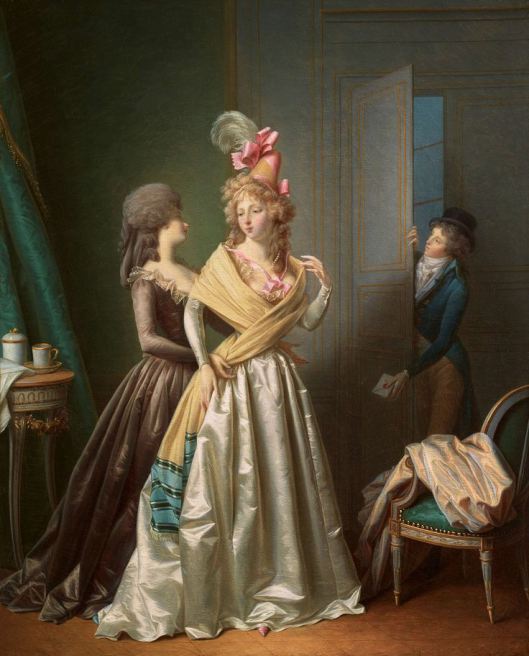Art Fairs
What Does Hervé Aaron Predict for TEFAF 2015?
His gallery is one of the premier "antiquaires" in the world.

His gallery is one of the premier "antiquaires" in the world.


Jean-Simon Fournier, The Letter (ca. 1795), will be offered at Didier Aaron & Cie (Stand 347) at TEFAF (March 13–22, 2015).
Courtesy Didier Aaron & Cie.
Founded in Paris in 1923, the period French furniture and Old Masters gallery Didier Aaron & Cie has branches in London and New York. The gallery specializes in predominantly French 17th to 19th century painting and drawings; 18th and 19th century European furniture and decorative arts, as well as a selection of other works.
The gallery serves a clientele which includes some of the art world’s most illustrious international collectors, and venerable institutions including the Metropolitan Museum of Art, New York; the Victoria & Albert Museum, London; the National Gallery, London; the Louvre, Paris; and the Museum of Western Art, Tokyo. The gallery’s selection spans several different schools and period styles and is characterized by uncompromising quality and eclecticism.
Hervé Aaron joined his family’s business in 1975 and took over from his father Didier as president and director in 1996. Under his leadership the gallery has cemented its reputation as one of the premier “antiquaires” in the world.
How many times have you exhibited at TEFAF?
We started exhibiting at TEFAF in 1999.
What are you showing at the fair?
We are only exhibiting Old Master Paintings, mostly French 17th, 18th, and 19th centuries, and also some Italian, and some Dutch paintings.
Can you divulge which of your pieces is of particular importance?
We will present this year a great set of four huge paintings by Hubert Robert, one of the most important French painters of the 18th century.
TEFAF is known for its excellent, extensive vetting process. How do you choose which artworks to bring?
We bring the important items we have bought during the previous year, and also some pieces of particular interest for museums, as TEFAF is now the place where galleries meet most of the curators.
TEFAF beautifully juxtaposes Old Masters with contemporary pieces. What part of the fair would you recommend most for visitors?
Old Masters, of course! It is really the heart of this fair, and the main reason why so many people come from all over the world.
What was the most incredible or unusual thing you ever experienced at TEFAF?
About 10 years ago, a man in Hong Kong saw a picture of one of our paintings at TEFAF in the International Herald Tribune, liked it, called on the booth, and paid us three days later.
Apart from your gallery of course, what else should one be looking out for at this year’s edition?
One can always find some incredible Kunstkammer objects at Georg Laue.
The annual TEFAF Art Market Report [the 2014 edition is here] provides very interesting information about international trade and new markets. Do you have a prediction for 2015?
It is presently hard to have a long-term vision but it is for sure that very important pieces are much more difficult to find than to sell. For an old gallery as ours, which knows most of the French private collections, important transactions with Russian or Chinese clients (for example) can happen when we privately find them “the item” they were looking for.